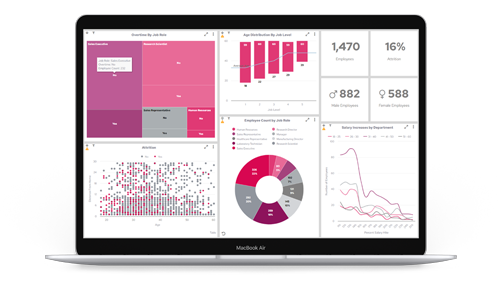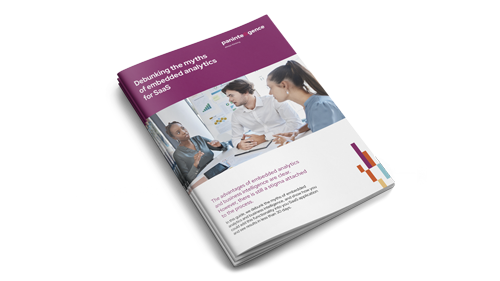Protecting healthcare data is paramount, and while security is a major problem in healthcare, steps can be taken to safeguard crucial data in Healthtech.
Why is Healthcare data security important?
Advances in technology have been a catalyst in the healthcare system for converting from insecure paper-based systems to more secure electronic ones. Although the change has been welcomed, Healthtech applications often handle sensitive and confidential healthcare information, such as medical records, insurance details, and personal identification information, susceptible to increased security breaches.
Healthtech applications must have a comprehensive data security plan to protect sensitive information from both internal and external threats to not only stay compliant with mandatory regulations such as HIPAA and GDPR but also to avoid other expenses that are connected with data breaches, such as loss of business, negative reputation and, of course, jeopardize patient confidentiality.
Types of Healthtech security threats
Although the rapid rate of Healthtech applications has created a positive digital transformation in healthcare, it has quickly outpaced current security controls, leaving holes for exploitation. This has led to a surge in security attack activity, with HIPAA reporting that in July 2022 in the U.S., 66 healthcare data breaches of 500 or more records were reported to the Department of Health and Human Services Office for Civil Rights.
Security threats on Healthtech applications often involve attacks on the most exposed part of the application's infrastructure, typically a web server. Attackers tend to use data, software, or commands to exploit the vulnerabilities in an application, its server, or other connected infrastructure. Some specific security concerns in healthcare applications include:
- Ransomware attacks: Since the beginning of the COVID-19 pandemic, ransomware has emerged as one of the biggest cyber threats to the healthcare sector. Healthtech applications and services have propelled over recent years to address the demand for treatment, vaccines, telehealth, and tracing. Attackers have identified that healthcare organizations delivering vital and life-saving treatments are more easily coerced than ransomware victims in other sectors. Ransomware attacks can access critical information such as prescriptions and dosing for patients and manipulate health record data to threaten patient care.
- Cloud vulnerabilities: Many Healthtech organizations have adopted cloud services to accelerate their digital transformation. Although this initiative is a means to keep up with high demand, patient health information and other confidential data are increasingly being hosted in multi-cloud vendors. Using a multi-cloud environment broadens the attack surface and leads to high vulnerability to attacks. Each cloud possesses different security standards, creating inconsistent practices for protecting data.
- Bot traffic: Bot traffic presents a unique challenge to the Healthtech sector. Bots can be responsible for various fraud activities, including account creation, content scraping, and account takeover. This can lead to unauthorized parties using credentials to access accounts through password cracking.
- Web application attacks: Cross-site scripting attacks, SQL injection, protocol manipulation attacks, and remote code execution are amongst the most common web application attacks.
Best security practices when embedding third-party Healthtech applications into SaaS
Protecting data in the healthcare industry is no easy feat. To be best equipped for continued compliance and to be placed at a lower risk of suffering costly data breaches, there are vital steps SaaS vendors should make to ensure healthcare data remains secure.
No movement of patient-centric data
Due to the high amount of data breaches in healthcare, it’s vital that SaaS vendors prioritize data security. Transferring patient-centric data to external environments can cause significant concerns surrounding security. When considering a vendor, it's essential to understand how they access and handle your data. If a vendor needs to move your data, it's paramount to understand why.
Beyond this, Authorisation, Authentication, and API are the three essential elements that are crucial to achieving complete security:
- Authentication: Authentication is critical for SaaS vendors in healthcare. Due to the high sensitivity of data, Healthtech applications that don’t include strong encryption to protect information from access are easily susceptible to unauthorized parties. Third-party apps should provide multiple authentication models to meet security standards and ensure a secure user experience.
- Authorization: Third-party applications should also adhere to the authorization access model that you have deployed. SaaS providers must establish granular authorization policies that define the resources and data that users can access. By doing this, you can minimize the risk of unauthorized access and data breaches.
- API: APIs allow third-party applications to seamlessly integrate into other applications, enabling data and functionalities to be shared easily. When having access to an API, developers can gain full control over security needs and implement custom security measures. This is highly important when handling confidential and sensitive data in healthcare to maintain top levels of data protection and security.
Stay seriously secure with Pi
Pi provides a secure platform for Healthtech with a range of advanced security features and capabilities. Our embedded analytics solution provides a reliable, robust, and secure solution for Healthtech organizations to safeguard confidential healthcare data, whilst staying GDPR and HIPAA compliant.
The Pi platform has been expertly engineered to support large and continuous healthcare data streams and to deliver white-labelled, customizable BI dashboards and reports that empower healthcare providers.
At Panintelligence, keeping your Healthtech data secure is our priority. Get in touch with our experts or request a demo to get started.























